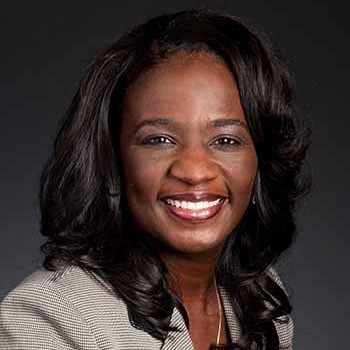A helping hand from corporate America could help to cut the equity gap for minority-owned companies from 333 to 15 years, according to a new study.
It will take a shocking 333 years to achieve economic equity for minority-owned businesses (MBEs) with White-owned firms in the US at the current growth rate, according to research from Michigan Minority Supplier Development Council (MMSCD). However, the gap could be closed in just 15 years “if all corporations grow their MBE spend percentage by just 1% annually,” according to MMSDC President and CEO Michelle Sourie Robinson.
She announced the results of the study at the organisation’s recent procurement conference. Robinson said that increasing supplier diversity remains a major challenge; and that achieving parity would bring a significant boost to the overall economy. In fact, achieving parity between Black-owned and White-owned businesses would add $290 billion to the nation’s overall wealth.
Robinson said a key solution to shortening the timeline is a deliberate and intentional focus on minority firms access to and spending from corporations. The research shows that the average MBE percent to total spend is currently 3.29%. But this figure needs to increase to between 13% and 16% (excluding only payroll and taxes) to achieve parity. Additionally, the study revealed MBEs created 14.2% of new jobs between 2014 and 2018; yet they collected only 7.2% of revenue growth during that same period.
SEVERE PANDEMIC IMPACT ON MBES
During the pandemic, minority businesses were impacted more severely, with Black-owned business down 41%, Latinx-owned business down 32% and Asian-owned business down 26%. In comparison, business for White-owned firms declined by just 17%. Other key findings include:
- In 2018, people of colour represented 40% of the US population; but revenues from MBEs represented only 9.4% of revenues by private US firms.
- From 2014 to 2018, there was only a 1.25% increase in the number of MBE firms with more than $1 million in revenue, reaching 17.4%. In that same time span, revenues only increased from 8.8% to 9.4%.
By 2045, people of colour are expected to make up more than 50% of the US population. Companies that are not responsive to this growing customer base are more likely to be left behind; which is another incentive for MBE spending growth. “After decades of stagnation, it’s time for corporations to go beyond words; and take actions that help create lasting wealth within communities of colour,” stated Robinson. “By doing so, ALL communities will benefit.”

ECONOMIC EQUITY FOR PEOPLE OF COLOUR
“This research makes it crystal clear that the current path is one we cannot continue if we wish to achieve economic equity for people of colour in our lifetimes,” added Robinson. “Corporations who understand that strong communities create strong customers, strong employees and strong neighbours, must re-commit to providing access for MBEs to compete for all aspects of their business. If all corporations grow their MBE spend percentage by 1% annually, the timeline to achieve parity would improve from 333 years to 15 years.”
At the MMSDC’s 2021 conference, keynote speaker Dr Bernice King, daughter of Dr Martin Luther King, Jr, discussed her father’s focus on economic equality explaining why he believed “racial and economic injustice were inseparable twins”; as shown in the video below.
PATH TO PARITY
The study also highlighted the path to parity. Key recommendations include:
- Consider MBE spending across all categories. Go beyond construction and manufacturing and look into technology and professional services too.
- Help create viable pools of MBEs by removing barriers to access. Black and Hispanic businesses only received 2.6% of all venture funding in 2020, for example. Increased access to capital will accelerate revenue growth among certified minority businesses.
- Help to train the next generation of minority business owners, by giving them the knowledge to one day start their own businesses.
- Incorporate achievable goals and metrics to quantify the corporate benefits of supplier diversity and small business programmes. For many years, organisations have promoted the need to support small and diverse businesses; yet most rarely establish an industry-wide project plan to do so.
Click here for more information about the report.







































